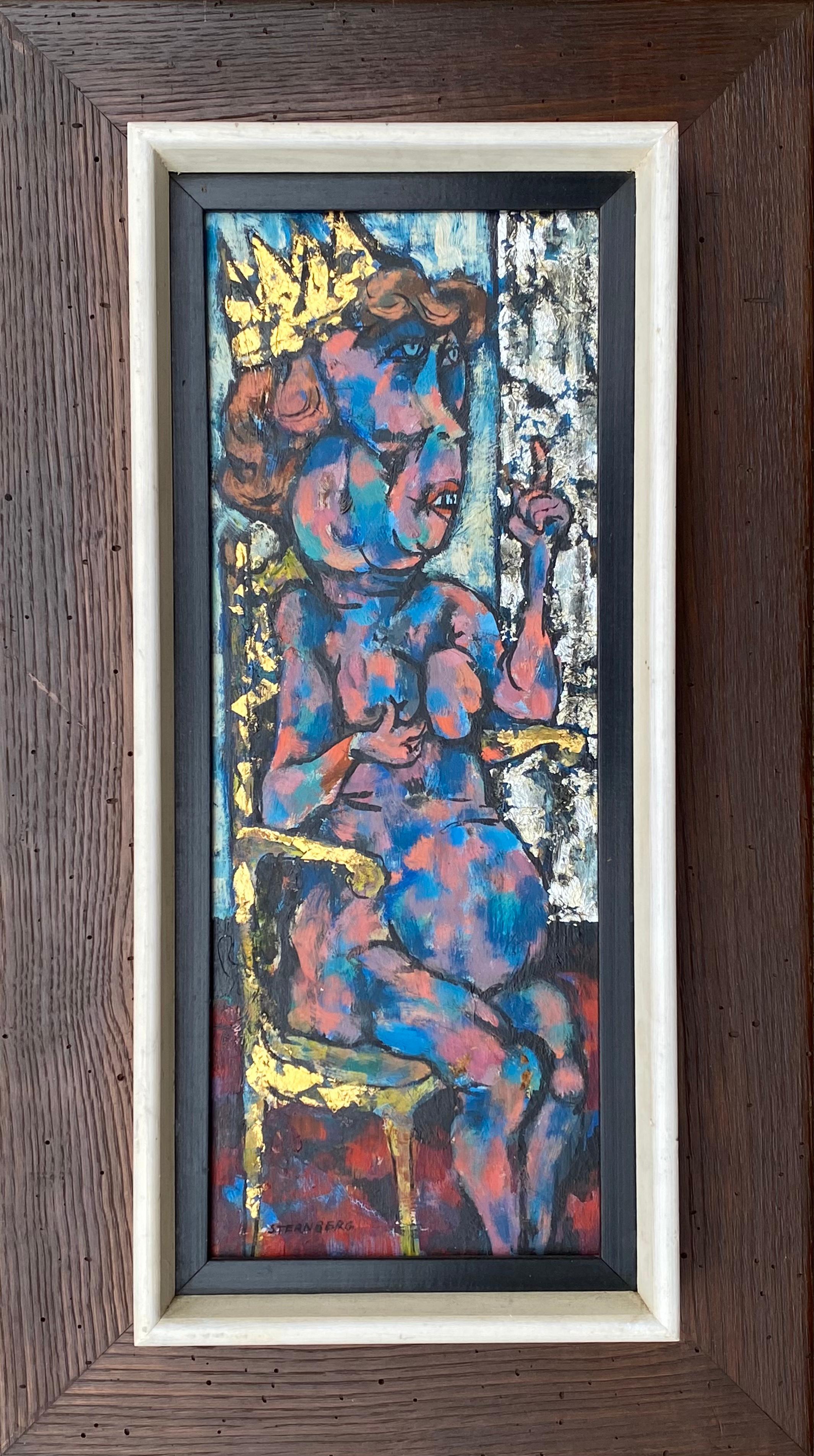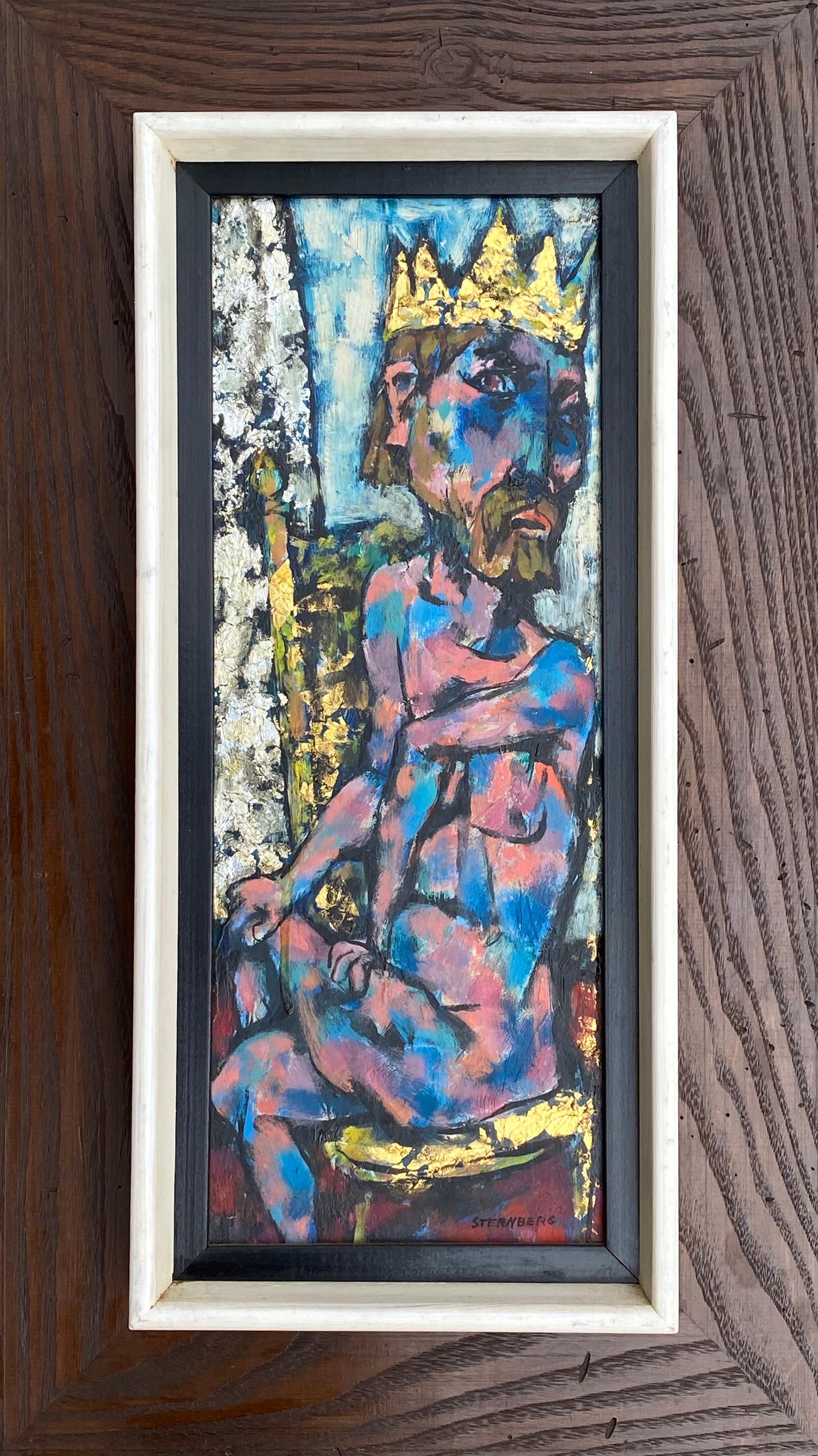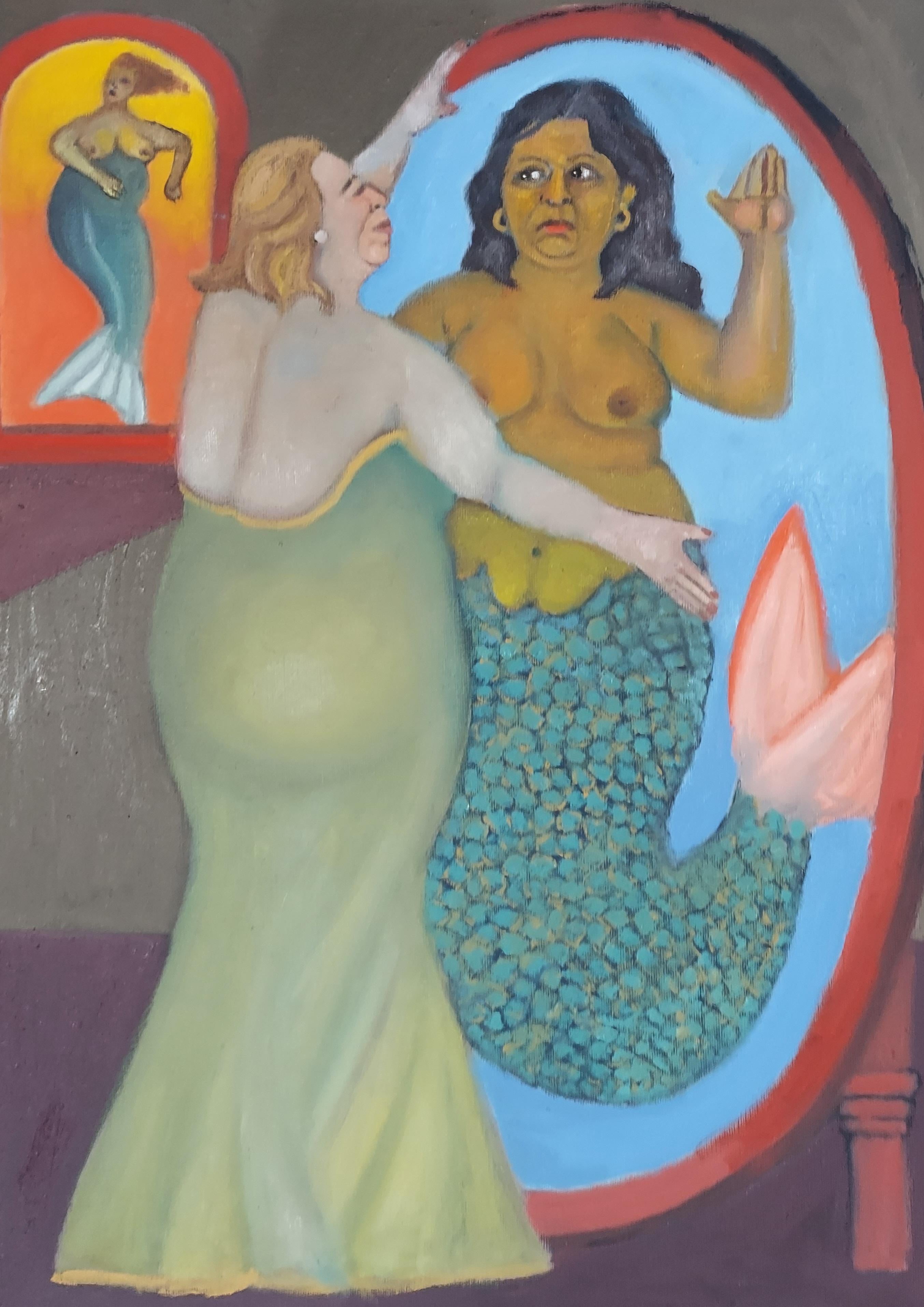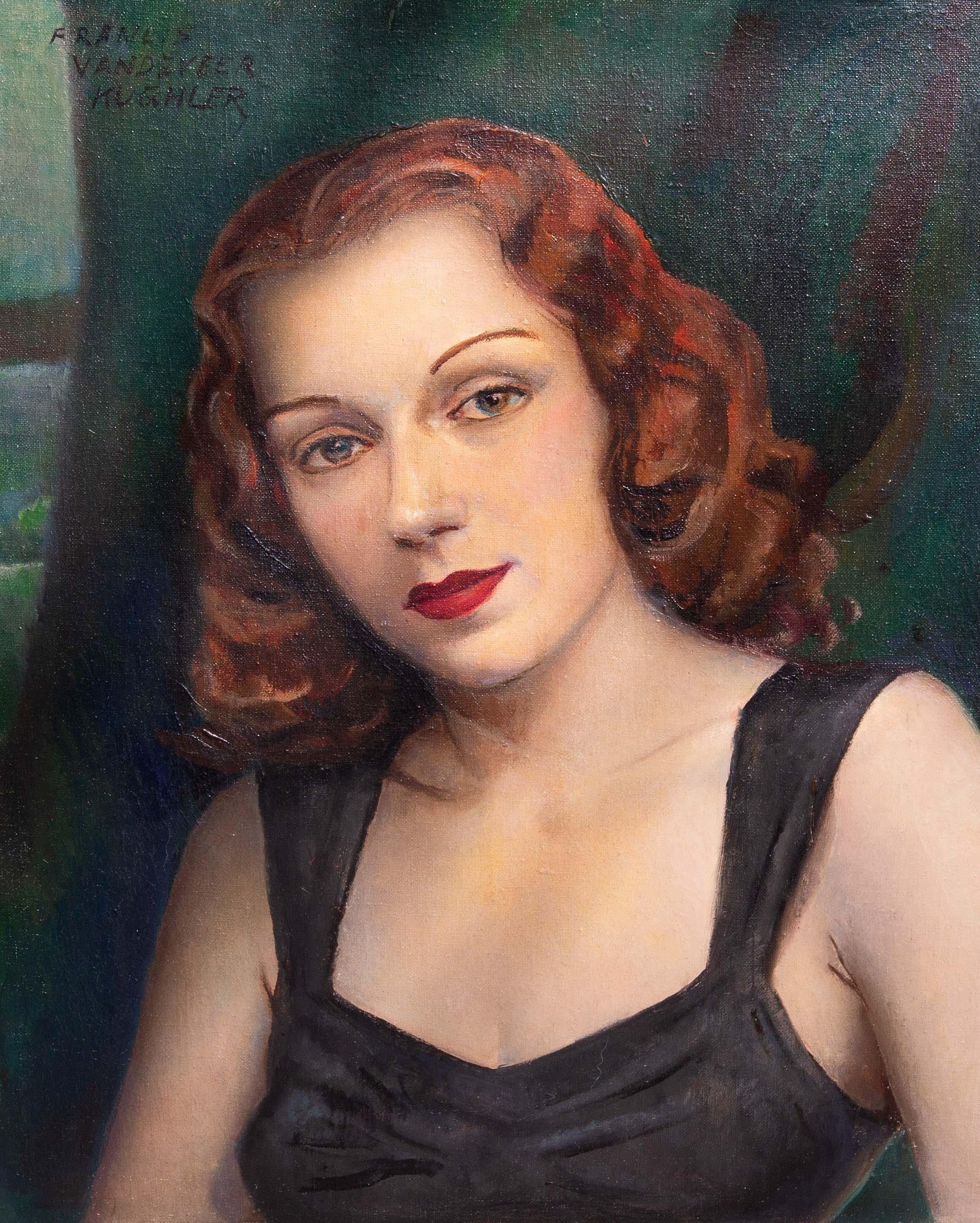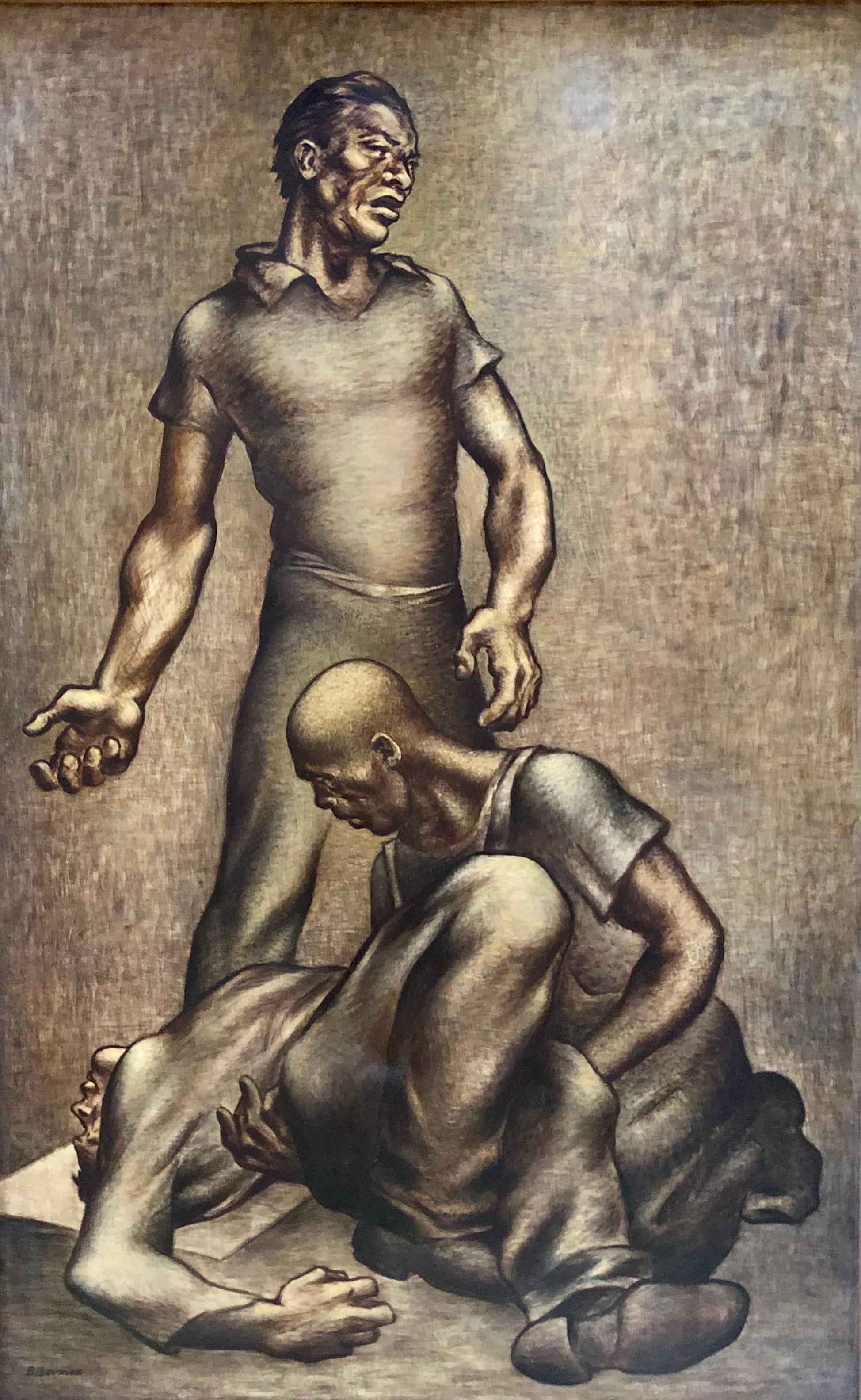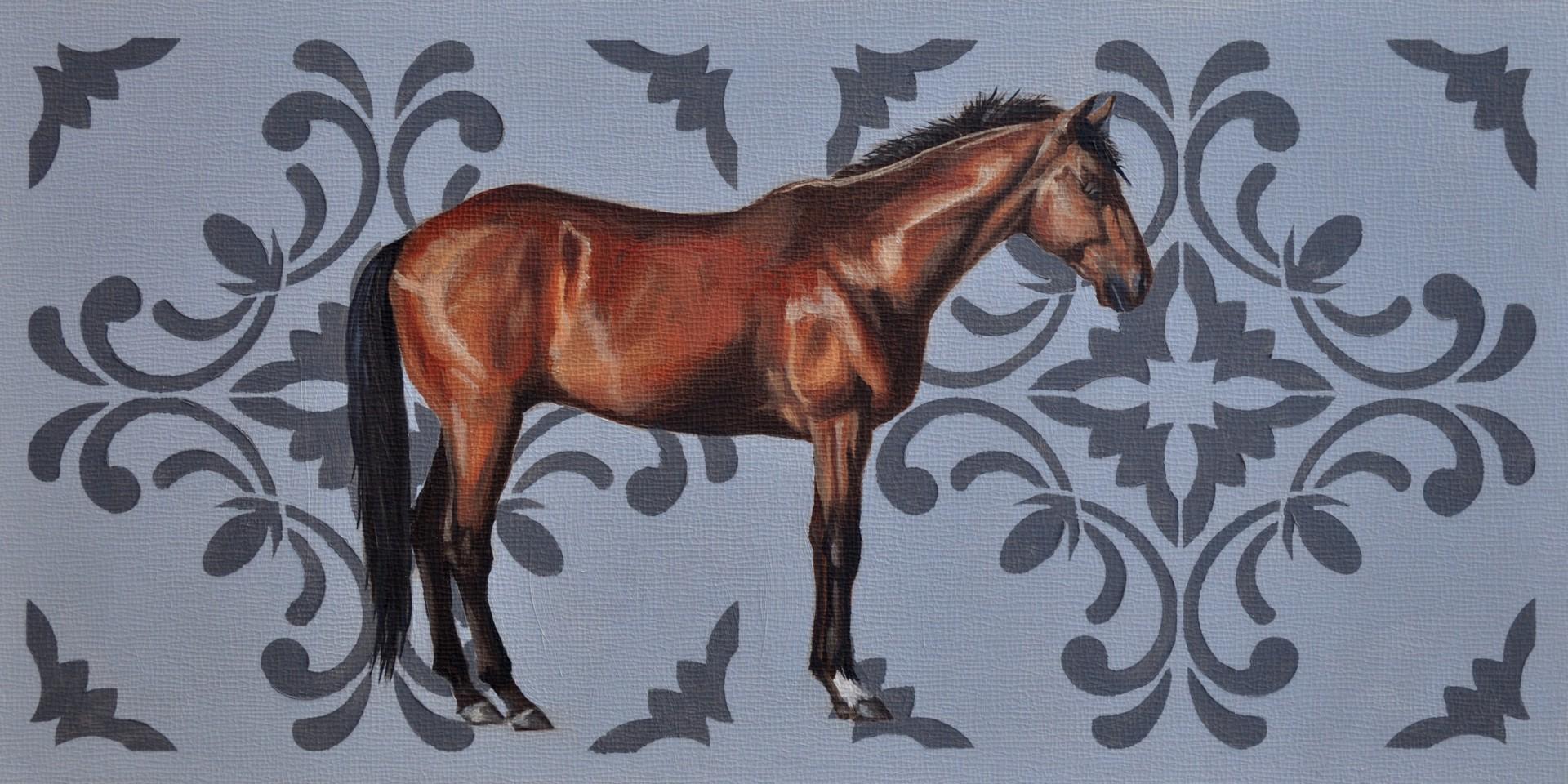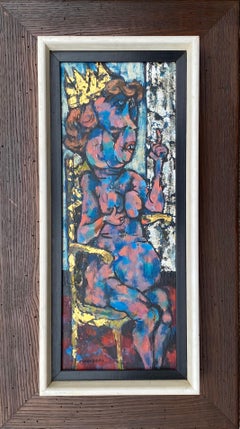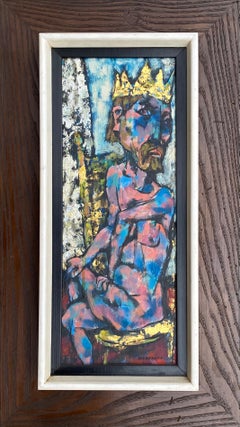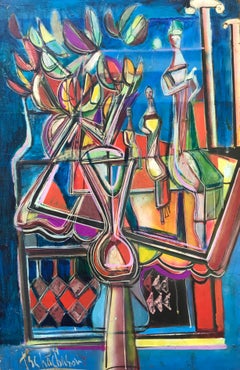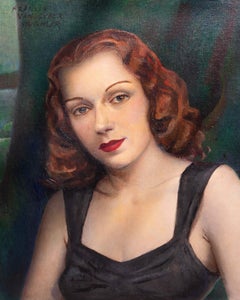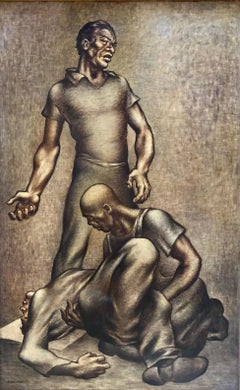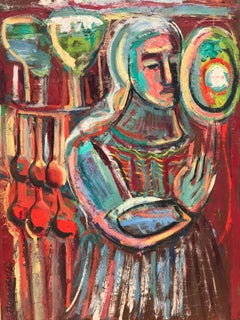
"Woman with Orbs"
Want more images or videos?
Request additional images or videos from the seller
1 of 13
Nahum Tschacbasov"Woman with Orbs"1960
1960
About the Item
- Creator:Nahum Tschacbasov (1899-1984, American)
- Creation Year:1960
- Dimensions:Height: 40 in (101.6 cm)Width: 30 in (76.2 cm)Depth: 0.25 in (6.35 mm)
- Medium:
- Movement & Style:
- Period:
- Condition:Currently unframed.
- Gallery Location:Southampton, NY
- Reference Number:1stDibs: LU1412735231
About the Seller
5.0
Platinum Seller
These expertly vetted sellers are 1stDibs' most experienced sellers and are rated highest by our customers.
Established in 1977
1stDibs seller since 2013
467 sales on 1stDibs
Typical response time: 1 hour
More From This SellerView All
- “The Queen”By Harry SternbergLocated in Southampton, NYOriginal 1965 oil on masonite painting of a queen on her throne with embellishments of gold and silver leaf by the well known American artist, Harry Sternberg. Signed lower left. Ci...Category
1960s Post-Modern Figurative Paintings
MaterialsGold Leaf
$1,800 Sale Price37% Off - “The King”By Harry SternbergLocated in Southampton, NYOriginal 1965 oil on masonite painting of a king on his throne with embellishments of gold and silver leaf by the well known American artist, Harry Sternberg. Signed lower right. Ci...Category
1960s Post-Modern Figurative Paintings
MaterialsGold Leaf
$1,800 Sale Price37% Off - “Flowers and Figures”By Nahum TschacbasovLocated in Southampton, NYFabulous oil on masonite by the well known Russian/American artist, Nahum Tschacbasov. Signed and dated lower left, 1954.. In very good original condition; no issues. The painting ...Category
1950s Modern Figurative Paintings
MaterialsOil, Masonite
- “Fleet Week”Located in Southampton, NYOriginal oil on masonite painting of Fleet Week with sailors flirting with young women on the dock by the American artist, Sarah Pace Carothers Rhode. ...Category
1940s Ashcan School Figurative Paintings
MaterialsMasonite, Oil
$2,880 Sale Price20% Off - “Beach Day”Located in Southampton, NYVery well executed original oil on masonite beach painting by the British artist., Miles Christopher Fairhurst. Signed with artist initials lower left. Signed verso along with arti...Category
1980s Post-Impressionist Figurative Paintings
MaterialsOil, Masonite
$1,280 Sale Price20% Off - “Rainy Sunset Florence, Italy”Located in Southampton, NYHere for your consideration is a very well executed oil on masonite original painting by the Italian artist, Mario Poggiali. Signed lower right. Circa 1970. Gallery label and certi...Category
1970s Contemporary Figurative Paintings
MaterialsOil, Masonite
$1,760 Sale Price20% Off
You May Also Like
- Mermaid Reflections imaginative fantasy of women, mirror warm inviting colorBy Stephen BassoLocated in Brooklyn, NYThis work is part of an ongoing series of Mermaid by the artist. It is oil paint on linen mounted on wood panel with wooden bars suitable for hanging without framing unless desired. ...Category
2010s Post-Modern Figurative Paintings
MaterialsWood, Oil, Linen
- Striking Hollywood Regency Portrait of a Red Haired Lady by Kughler 1932By Francis Vandeveer KughlerLocated in Rochester, NYHollywood regency portrait painting of a young woman by Francis Kughler (American 1901-1970). Oil on canvas board. Circa 1932. Unframed. Born in New York City in 1901, Francis Vandeveer Kughler attended Cooper Union, the Mechanics' Institute, and the National Academy of Design School of Art where he met Charlotte Livingston, an artist, whom he was later to marry. During this period he was the winner of a Tiffany scholarship, which provided him a summer of landscape painting at the Louis Comfort Tiffany estate at Oyster Bay, L.I. In the 1940s, Kughler became the President of the Salmagundi Club, a well-known art club in Washington Square in New York City.Well-known as a muralist, society portrait painter and lithographer, he was a prolific painter who made cityscapes, landscapes, and nudes. He and his wife, Charlotte Livingston, lived and worked in Bronx, New York. mid century modern wpa impressionist...Category
Mid-20th Century Modern Figurative Paintings
MaterialsMasonite, Oil
- Fallen Comrades/InterludeLocated in Los Angeles, CAThis work is part of our exhibition - America Coast to Coast: Artists of the 1940s Fallen Comrades/Interlude, 1949, oil on masonite, signed lower left, 35 x 56 inches; Gallery Z la...Category
1940s American Modern Paintings
MaterialsMasonite, Oil
Price Upon Request - Ceremonial Dancers oil and tempera painting by Julio De DiegoBy Julio de DiegoLocated in Hudson, NYArtwork measures 48" x 30" and framed 56 ¼" x 38 ¼" x 3" Provenance: John Heller Gallery, NYC, circa 1975 (label verso) The artist's daughter Corbino Galleries, Sarasota, FL (1990)...Category
1940s Modern Abstract Paintings
MaterialsMasonite, Oil, Tempera
- The Magician oil and tempera painting by Julio de DiegoBy Julio de DiegoLocated in Hudson, NYJulio De Diego’s Atomic Series paintings made an extraordinary statement regarding the shock and fear that accompanied the dawn of the nuclear age. In the artist’s own words, “Scientists were working secretly to develop formidable powers taken from the mysterious depths of the earth - with the power to make the earth useless! Then, the EXPLOSION! . . . we entered the Atomic Age, and from there the neo-Atomic war begins. Explosions fell everywhere and man kept on fighting, discovering he could fight without flesh.” To execute these works, De Diego developed a technique of using tempera underpainting before applying layer upon layer of pigmented oil glazes. The result is paintings with surfaces which were described as “bonelike” in quality. The forms seem to float freely, creating a three-dimensional visual effect. In the 1954 book The Modern Renaissance in American Art, author Ralph Pearson summarizes the series as “a fantastic interpretation of a weighty theme. Perhaps it is well to let fantasy and irony appear to lighten the devastating impact. By inverse action, they may in fact increase its weight.” Exhibited 1964 Marion Koogler McNay Art Institute, San Antonio, Texas This work retains its original frame which measures 54" x 42" x 2" About this artist: Julio De Diego crafted a formidable persona within the artistic developments and political struggles of his time. The artist characterized his own work as “lyrical,” explaining, “through the years, the surrealists, the social-conscious painters and the others tried to adopt me, but I went my own way, good, bad or indifferent.” [1] His independence manifested early in life when de Diego left his parent’s home in Madrid, Spain, in adolescence following his father’s attempts to curtail his artistic aspirations. At the age of fifteen he held his first exhibition, set up within a gambling casino. He managed to acquire an apprenticeship in a studio producing scenery for Madrid’s operas, but moved from behind the curtains to the stage, trying his hand at acting and performing as an extra in the Ballet Russes’ Petrouchka with Nijinsky. He spent several years in the Spanish army, including a six-month stretch in the Rif War of 1920 in Northern Africa. His artistic career pushed ahead as he set off for Paris and became familiar with modernism’s forays into abstraction, surrealism, and cubism. The artist arrived in the U.S. in 1924 and settled in Chicago two years later. He established himself with a commission for the decoration of two chapels in St. Gregory’s Church. He also worked in fashion illustration, designed magazine covers and developed a popular laundry bag for the Hotel Sherman. De Diego began exhibiting through the Art Institute of Chicago in 1929, and participated in the annual Chicago Artists Exhibitions, Annual American Exhibitions, and International Water Color Exhibitions. He held a solo exhibition at the Art Institute of Chicago in the summer of 1935. Though the artist’s career was advancing, his family life had deteriorated. In 1932 his first marriage dissolved, and the couple’s young daughter Kiriki was sent to live with friend Paul Hoffman. De Diego continued to develop his artistic vocabulary with a growing interest in Mexican art. He traveled throughout the country acquainting himself with the works of muralists such as Carlos Merida, and also began a collection of small native artifacts...Category
1940s American Modern Abstract Paintings
MaterialsMasonite, Oil, Tempera
- St. Atomic oil and tempera painting by Julio de DiegoBy Julio de DiegoLocated in Hudson, NYJulio De Diego’s Atomic Series paintings made an extraordinary statement regarding the shock and fear that accompanied the dawn of the nuclear age. In the artist’s own words, “Scientists were working secretly to develop formidable powers taken from the mysterious depths of the earth - with the power to make the earth useless! Then, the EXPLOSION! . . . we entered the Atomic Age, and from there the neo-Atomic war begins. Explosions fell everywhere and man kept on fighting, discovering he could fight without flesh.” To execute these works, De Diego developed a technique of using tempera underpainting before applying layer upon layer of pigmented oil glazes. The result is paintings with surfaces which were described as “bonelike” in quality. The forms seem to float freely, creating a three-dimensional visual effect. In the 1954 book The Modern Renaissance in American Art, author Ralph Pearson summarizes the series as “a fantastic interpretation of a weighty theme. Perhaps it is well to let fantasy and irony appear to lighten the devastating impact. By inverse action, they may in fact increase its weight.” Exhibited 1950 University of Illinois at Urbana "Contemporary American Painting" 1964 Marion Koogler McNay Art Institute, San Antonio, Texas This work retains its original frame which measures 54" x 36" x 2". About this artist: Julio De Diego crafted a formidable persona within the artistic developments and political struggles of his time. The artist characterized his own work as “lyrical,” explaining, “through the years, the surrealists, the social-conscious painters and the others tried to adopt me, but I went my own way, good, bad or indifferent.” [1] His independence manifested early in life when de Diego left his parent’s home in Madrid, Spain, in adolescence following his father’s attempts to curtail his artistic aspirations. At the age of fifteen he held his first exhibition, set up within a gambling casino. He managed to acquire an apprenticeship in a studio producing scenery for Madrid’s operas, but moved from behind the curtains to the stage, trying his hand at acting and performing as an extra in the Ballet Russes’ Petrouchka with Nijinsky. He spent several years in the Spanish army, including a six-month stretch in the Rif War of 1920 in Northern Africa. His artistic career pushed ahead as he set off for Paris and became familiar with modernism’s forays into abstraction, surrealism, and cubism. The artist arrived in the U.S. in 1924 and settled in Chicago two years later. He established himself with a commission for the decoration of two chapels in St. Gregory’s Church. He also worked in fashion illustration, designed magazine covers and developed a popular laundry bag for the Hotel Sherman. De Diego began exhibiting through the Art Institute of Chicago in 1929, and participated in the annual Chicago Artists Exhibitions, Annual American Exhibitions, and International Water Color Exhibitions. He held a solo exhibition at the Art Institute of Chicago in the summer of 1935. Though the artist’s career was advancing, his family life had deteriorated. In 1932 his first marriage dissolved, and the couple’s young daughter Kiriki was sent to live with friend Paul Hoffman. De Diego continued to develop his artistic vocabulary with a growing interest in Mexican art. He traveled throughout the country acquainting himself with the works of muralists such as Carlos Merida, and also began a collection of small native artifacts...Category
1940s American Modern Abstract Paintings
MaterialsMasonite, Oil, Tempera
Recently Viewed
View AllMore Ways To Browse
Van Gogh Etching
Vintage Circus Collectables
Vintage Circus Collectibles
Schoolhouse Light Used
Pineapple Painting
Robert Heller
Vintage Circus Aesthetic
Vintage Circus Circus Aesthetic
Vintage Perls
Gorilla Vintage
A Tale Of Two Cities Vintage
Orb Mirror
Mother And Child Necklace
Metropolitan Museum Of Art Necklace
1970s Ocean Paintings
Gorilla Painting
Vintage Russo
John Stuart Mirror
